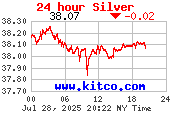Fraternal organizations, like the Sons of Telsh, hired physicians to treat members and their families in return for a set annual fee. Numerous immigrant groups in urban areas engaged doctors in this way, but commentators associated the system especially with New York Jewish burial societies.
The system of hiring doctors gave society members access to primary health care. But just as importantly, it preserved the immigrants' sense of dignity and guaranteed them a great deal of power in the doctor-patient relationship. For the cost of $2-3 (the cost of one or two visits from a private physician), an immigrant family could enjoy the services of a society doctor for the entire year. The services of the lodge doctor resembled those of a private physician in that treatment was carried out at the home, and therefore at the convenience of the patient. Inexpensive access to medical care probably encouraged early treatment, may have prevented the progression of disease, and definitely limited the use of patent medicines and folk healers.
The system also benefited the doctors. A recently graduated physician could build up a practice by securing a society contract, while he built up an independent clientele. Physicians who were immigrants themselves often had a limited pool of potential patients, since they faced social and cultural barriers to practicing outside their immigrant community. The medical profession was particularly popular among Eastern European Jews in New York; a 1906 study reported on the overabundant supply of physicians.
Serving as a society doctor was hard work. Physicians sometimes served as many as ten different fraternal organizations. An article in the Tageblat estimated that the lodge doctor might see upwards of 100 patients a day. Not, surprisingly, the hours were long. For example, Dr. Freedman had office hours from 8-10am, 2-3pm, and 6-8pm. In addition, he had to make house calls, frequently over a wide geographic area. Forced to climb up and down tenement stairs, lodge doctors found their patients exceedingly demanding. Physicians' harried schedules and inexperience sometimes compromised the quality of care provided by lodge doctors. The Tageblat reported, "sad is the life of the lodge and society doctor, but sadder still is the suffering of the majority of patients who are treated by this sort of doctor."
Members of burial societies did not have to resort to public dispensaries, like the Good Samaritan Dispensary at the corner of Broome and Essex Streets, or hospital clinics, the other major healthcare providers for the poor, which carried the stigma of charity. Dispensaries, the main alternative to contract medicine, had all its deficiencies plus the taint of charity. Like their colleagues in society practice, dispensary doctors faced overwhelming workloads. Patients waited for hours in crowded conditions for perfunctory examinations. The doctors, frequently hailing from a different ethnic and class background than their patients, were viewed with suspicion. After 1899, because of a law, only the indigent could visit dispensaries. Thus, use of the clinics constituted a public declaration of penury and left the patients open to a range of intrusive investigations regarding their worthiness for medical care.
Pro:
The services of the lodge doctor resembled those of a private physician in that treatment was carried out at the home, and therefore at the convenience of the patient. Inexpensive access to medical care probably encouraged early treatment, may have prevented the progression of disease, and definitely limited the use of patent medicines and folk healers.
The system also benefited the doctors. A recently graduated physician could build up a practice by securing a society contract, while he built up an independent clientele. Physicians who were immigrants themselves often had a limited pool of potential patients, since they faced social and cultural barriers to practicing outside their immigrant community.
Con:
Physicians sometimes served as many as ten different fraternal organizations. . . .the lodge doctor might see upwards of 100 patients a day. Not, surprisingly, the hours were long. For example, Dr. Freedman had office hours from 8-10am, 2-3pm, and 6-8pm. In addition, he had to make house calls, frequently over a wide geographic area. Forced to climb up and down tenement stairs, lodge doctors found their patients exceedingly demanding. Physicians' harried schedules and inexperience sometimes compromised the quality of care provided by lodge doctors.
Compared to What?
Members of burial societies did not have to resort to public dispensaries, like the Good Samaritan Dispensary at the corner of Broome and Essex Streets, or hospital clinics, the other major healthcare providers for the poor, which carried the stigma of charity. Dispensaries, the main alternative to contract medicine, had all its deficiencies plus the taint of charity. Like their colleagues in society practice, dispensary doctors faced overwhelming workloads. Patients waited for hours in crowded conditions for perfunctory examinations. The doctors, frequently hailing from a different ethnic and class background than their patients, were viewed with suspicion. After 1899, because of a law, only the indigent could visit dispensaries. Thus, use of the clinics constituted a public declaration of penury and left the patients open to a range of intrusive investigations regarding their worthiness for medical care.
Medical Care Before the Welfare State, 1900-1930
On the face of it, a historical study of fraternal societies seems to be a subject fit only for connoisseurs of the arcane. Few Americans these days come into contact with such groups. When many of us hear the word lodge, we think of it as a place where television characters from our youth, such as Ralph Kramden (of the Loyal Order of Raccoons) and Fred Flintstone (of the Loyal Order of Water Buffalos), escaped from their more sensible wives to engage in childish hijinks—parading around with silly hats and mouthing pretentious rituals.And what happened to these what must be judged on the whole as successful private social service initiatives?
There was a time, however, when fraternal societies could not be so easily dismissed. Before the rise of the welfare state, they were rivaled only by churches as organizational providers of social welfare. By conservative estimates eighteen million American men and women were members in 1920 at least three out of every ten adult males. While fraternal societies differed in ethnicity, class, and gender, most shared a common set of characteristics. In general, this included a decentralized lodge system, some sort of ritual, and the payment of cash benefits in times of sickness and death.
By the turn of the century, an increasing number of societies began to add treatment by a doctor to their menu of services. This arrangement was known as lodge practice. It involved a simple contract under which a physician provided care in exchange for an annual salary determined by the size of lodge membership. To qualify, a prospective lodge doctor had to win an election by the members. Generally lodge practice plans did not extend beyond basic primary care and minor surgery, although a few provided hospitalization.
Lodge practice became particularly extensive in urban and industrial centers. In 1915, for example, Dr. S.S. Goldwater, Health Commissioner of New York City, went so far as to assert that in many communities it had become “the chosen or established method of dealing with sickness among the relatively poor.” In the Lower East Side of New York City, he noted, 500 physicians catered to Jewish societies alone. Among blacks in New Orleans there were over 600 fraternal societies with lodge practice during the 1920s.
The most important beneficiary of lodge practice was, of course, the patient of modest means. He or she was able to obtain the care of a doctor for about two dollars a year roughly equivalent to a day’s wage for a laborer. If translated into 1994 dollars, this annual fee would be equivalent to about 14 dollars, the hourly wage of some construction workers today!
The remuneration paid to the lodge doctor was a far cry from the higher fee schedules favored by the profession. A local medical society in Pennsylvania was typical in setting for its members the following minimum fees: one dollar per physical examination, surgical dressing, and housecall (daytime) and two dollars (nighttime). Such prices, at least for continual service, would have been out of reach for many poor Americans.
Even before the Depression, lodge practice had begun to fall into a state of decline. The pressure exerted by the leaders of organized medicine hastened the demise. By the 1910s, doctors had launched an all-out war against lodge practice. Throughout the country, medical associations imposed a range of sanctions against lodge doctors, including expulsion from the association and denial of hospital facilities. In certain instances, campaigns were organized to deny patient care, even in emergencies, to members of offending lodges. Most commentary from both sides of this conflict indicates that these sanctions were highly effective. In any case, by the end of the 1930s, the once vibrant health care alternative of lodge practice, which less than two decades before had inspired trepidation throughout the medical establishment, had virtually disappeared.
Over time the AMA was successful in establishing a cartel
A standard response to the suggestion that society can be ordered and organized by non-coercive means is what Stefan Moylneux calls the Argument from Apocolypse.1913
AMA establishes a "Propaganda Department" to gather and disseminate information concerning health fraud and quackery1922
Judicial Council amended The Principles of Medical Ethics, outlawing the solicitation of patients by physicians, a policy that remained in effect until the new Principleswere adapted in 19801934
During the Depression, the Judicial Council amended the Principles by making it unethical for any physician to dispose of his or her services to any lay body, organization, group, or individual under the conditions that would permit any of them to receive a profit on the doctor's services
The basic argument is that if we accept proposition “X,” civilized society will collapse, children will die in the streets, the old will end up eating each other, and the world will dissolve into an endless and apocalyptic war of all against all.
When it is suggested that perhaps the federal government might not be capable of engineering the health care "system" it means, of course, you want to keep things as they are now, only worse because you want old people to eat dog-food and die in the streets of swine flu!
But there was a time when ease of entry, voluntary association and price competition--in other words, a free market--provided normative health care to the "poor" without the enforcement arm of the state.




No comments:
Post a Comment